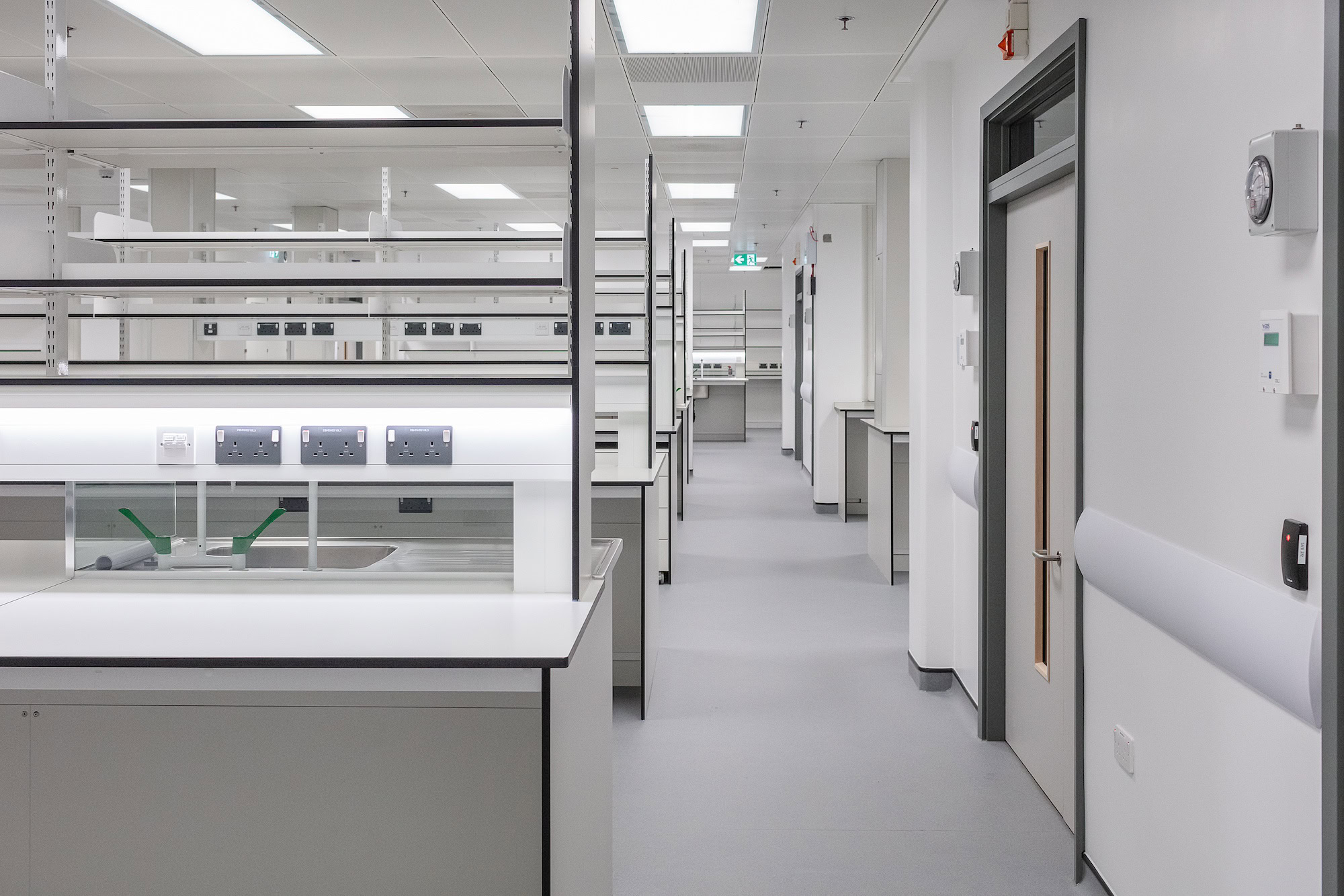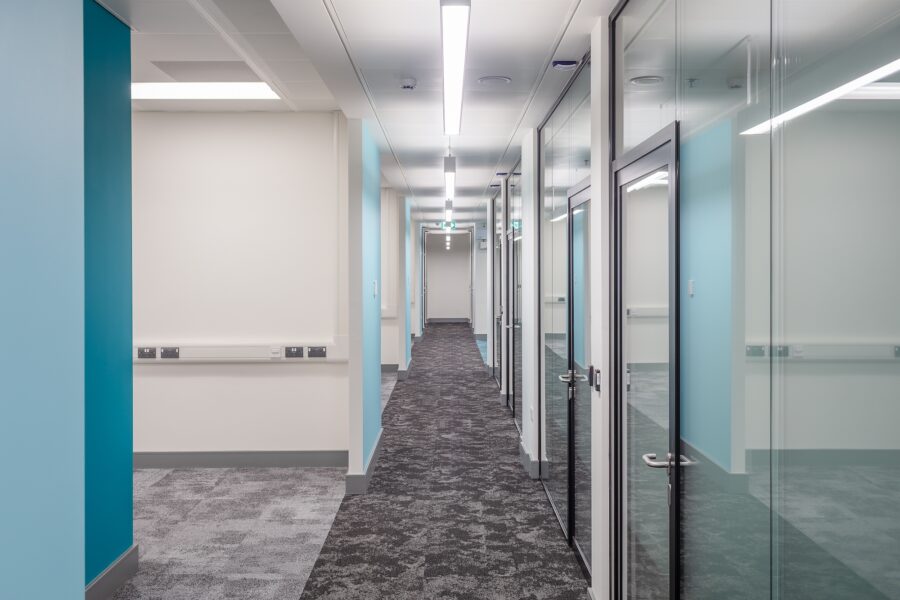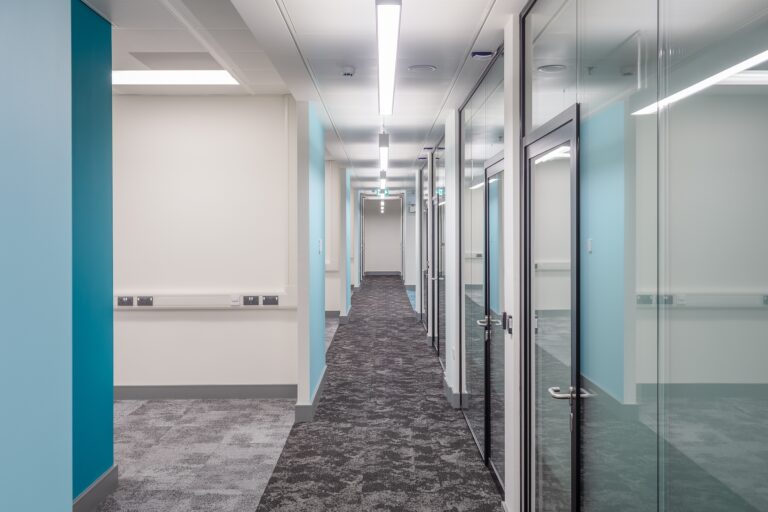This project for Imperial College London involved relocating the Department of Infectious Diseases from the St Mary’s Campus to the Sir Alexander Fleming Building.
The refurbishment involved creating new Containment Level 2 (CL2) labs, a Containment Level 3 (CL3) lab suite, an additional five labs, new offices, teaching space, and common areas across five levels, totalling approximately 3,200 sqm.
Integrating CL3 and CL2 labs into a live building, which had not been designed for this purpose, was a complex and challenging process. Extensive onsite design coordination and major design interventions were required, including creating new risers, running services externally to the building, constructing a new plant deck, and using crane lifts over other buildings to install plant equipment.
Containment Level 2 (CL2) labs handle moderate biohazard risks, requiring additional safety measures to protect against pathogens that may cause mild diseases. Features include:
- Access control systems
- Biosafety cabinets for work with pathogens or hazardous materials
- Dedicated handwashing sinks close to exits
- Enhanced air handling with HEPA-filtered exhaust systems
- Eye wash stations and emergency showers
- Sterilisation equipment within or nearby
- Durable, chemical-resistant surfaces and sealed flooring for spill management
- Designated storage for biological waste and sharps disposal containers
Containment Level 3 (CL3) labs are highly controlled environments designed for work with serious or potentially lethal pathogens. Features include:
- Airlock systems to maintain controlled access
- Negative air pressure with HEPA filtration to prevent airborne contamination
- Sealed, non-porous surfaces for walls, ceilings, and floors for easy decontamination
- Biosafety cabinets
- Separate ventilation systems for exhaust and supply air, with HEPA filtration
- Specialised personal protective equipment (PPE)
- Emergency backup systems for power and air circulation
- Robust waste management systems for secure disposal of biohazard materials



